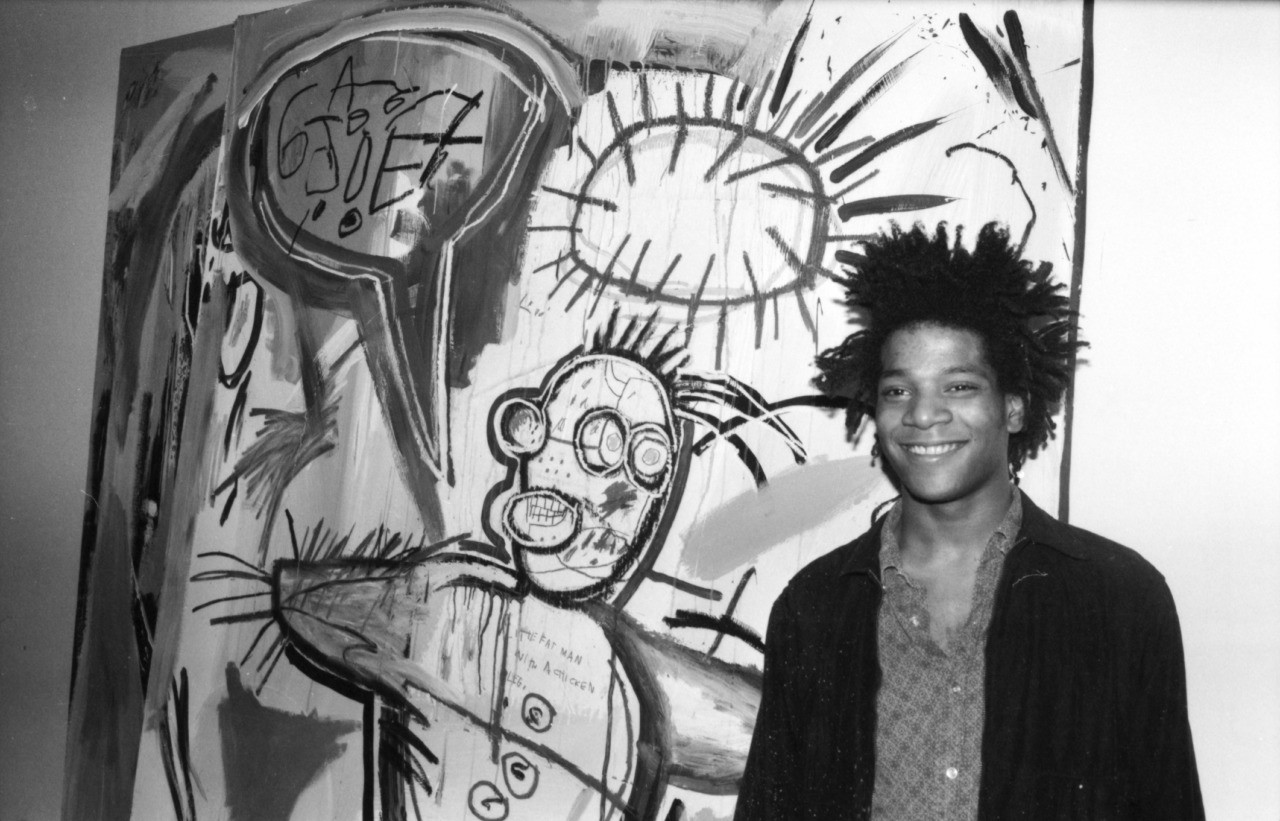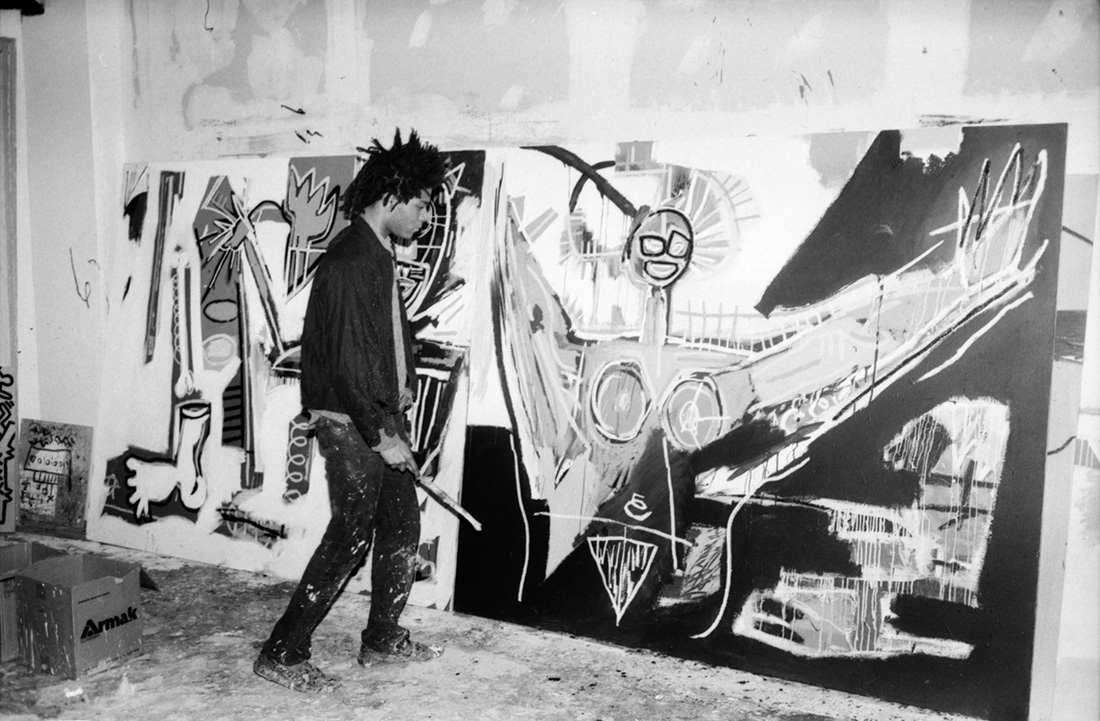This year marks the 30th anniversary since one of the most influential artists of the 20th century, the iconic Jean-Michel Basquiat, tragically departed from this earth. The late artist was one of those mesmerizing figures in New York City during the 1980s, known for creating historic drawings and paintings that easily made him one of the most heralded names in art history.
To commemorate the three decades since his untimely passing, film director David Shulman highlighted the profound artist’s life and work in American Masters – Basquiat: Rage to Riches, a documentary that includes family, unknown anecdotes and an appreciation of Basquiat’s work. The work of Shulman, who serves as both producer and director, merges his own personal appreciation with the stories of his art and technique, his connection to Hip-Hop culture and more to introduce an African-American icon to a new generation and share new insight with established admirers.
Right before the release of the documentary, David Shulman took time out to speak with The Source to reveal what went into the production of the documentary, stories he learned in the process and why the story of Jean-Michel Basquiat is one everyone should know.

Jean-Michel Basquiat, one of the most influential American artists of the 20th century, is the subject of American Masters — Basquiat: Rage to Riches.
(Photo Credit: Marion Busch)
The Source: How did you get started in telling the story of Basquiat?
David Shulman: The work of Jean-Michel Basquiat I was really familiar with. I had lived and worked in Manhattan at the time, around the corner from his studio on Crosby Street. I was of the belief at the time that painting was dead. With my background, I was a conceptual artist and showing work in galleries, showing an experimental film in Downtown Manhattan. My attitude was that painting was dead. But the work of Jean-Michel, Francesco Clemente, and some other artists were beginning to persuade me otherwise. So, there was work being planned on the anniversary of the very untimely death coming up. BBC decided to commission a documentary and that’s how the project came up.
What challenges did you have in telling this story?
A number of challenges. With so much of the other work at the time by Jean-Michel, I wanted to really find out what was missing from the story. What I found was missing was a real central focus, a more in-depth look at the work itself and what it was, what the thematic content was and what were some of the techniques. I thought there was a missing emphasis on its work; it was very important for me to try to get on his sister’s involved. I think that was the real challenge, as it took a couple of months — two or three at most — before [I was able to] get them on board. There were a number of individuals who needed a lot of persuading to participate because it was, in some cases, a very painful aspect of their life. In other cases, it was addressing the gaps within the work itself.
When working with the sisters, was there any pieces that you found directly compelling that they shared with you? Did anything hit you in your mind as someone who was coming up and working in that area that you may not have known before?
I mean, it’s everything the sisters have to say. The powerful impact that Michael Stewart case had on the sisters [allowed them to] provide a context for a child who was just really motivated and engaged and creative almost from the beginning — it just puts it in an extremely, three dimensional context. For me, that was great. I think the whole nature of Jean-Michel was so astute and determined to be in control of the song career and his own art. His destiny was something that was very striking. It’s like, the closer I looked the more I found out, and the more convinced I was that he was a person really doing his best to be in control of his own destiny.
I think the relationship he had with [Andy] Warhol was really fascinating. I didn’t really know the details and the nuances of exactly how and when they met, as I didn’t really fully understand their friendship and the complexity of their relationship. I didn’t know the nuances of a falling out, so for me that was all an absolutely fascinating part of the process. The fact that Andy Warhol went to dinner in Brooklyn to visit the family and meet one of the sisters was just, you know, hard to imagine! Stumbling onto that story and actually being able to represent it was very fun.
With Jean-Michel being present around the time of the budding Hip-Hop culture of yesterday, and then also becoming an icon within Hip-Hop culture of this era, how important was it for you to make sure that we had that essence of being aligned with rap culture in the documentary?
I think the film is very consciously of trying to reflect that [Hip-Hop element] through his friendships, through his artwork or even through his music. He produced a track, kind of an experimental Hip-Hop track, which was quite like his [art] production. The film reflects how the paint attempts to draw the connection between a merger of street culture, street art, Hip-Hop and his family. His friendship with Fab Five Freddy was a bridge to all of that. It resonates with the birth of Hip-Hop; it’s in poetry and in his own exploration of identifying as Black. It’s just all the elements that resonate in his work.

(L to R) Artist and Hip-Hop pioneer Fab 5 Freddy (aka Fred Brathwaite) is interviewed in American Masters — Basquiat: Rage to Riches, directed and produced by David Shulman.
Photo Credit: BBC Studios
For someone who is watching and they may not know anything about Jean-Michel, what would you want them to take away from this film? Also, for someone who has been a fan, supporter and overall Basquiat lover over the years, what would you like for them to take away?
For someone who isn’t, what I would hope they would take away is that his work is incredibly powerful, incredibly resonant and incredibly valuable to the culture and history as a whole. I’d also want them to know what he did with the standing of art history and that he was an artist that chose integrity. He was someone who was in control and had his own destiny and art form — it’s the deeper appreciation and understanding of the art, seeing it in a broader cultural context, and understanding the creative and personal integrity behind it.
I think for people who may be familiar with the work of Jean-Michel and feel they’re familiar with his story, I hope that the film provides an even deeper, three-dimensional portrait of his work, the connection to his family and the things that motivated him to the passion that drove him. I really hope people find a more three-dimensional appreciation of his relationship with the art world.
American Masters – Basquiat: Rage to Riches is available to stream on pbs.org/americanmasters and on PBS apps.
